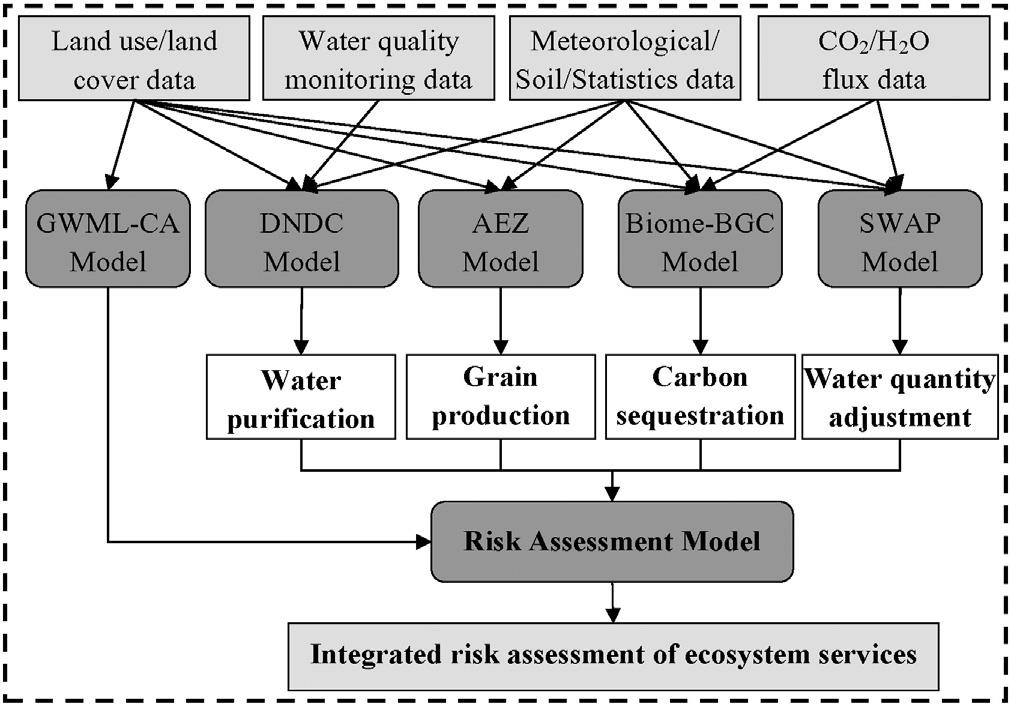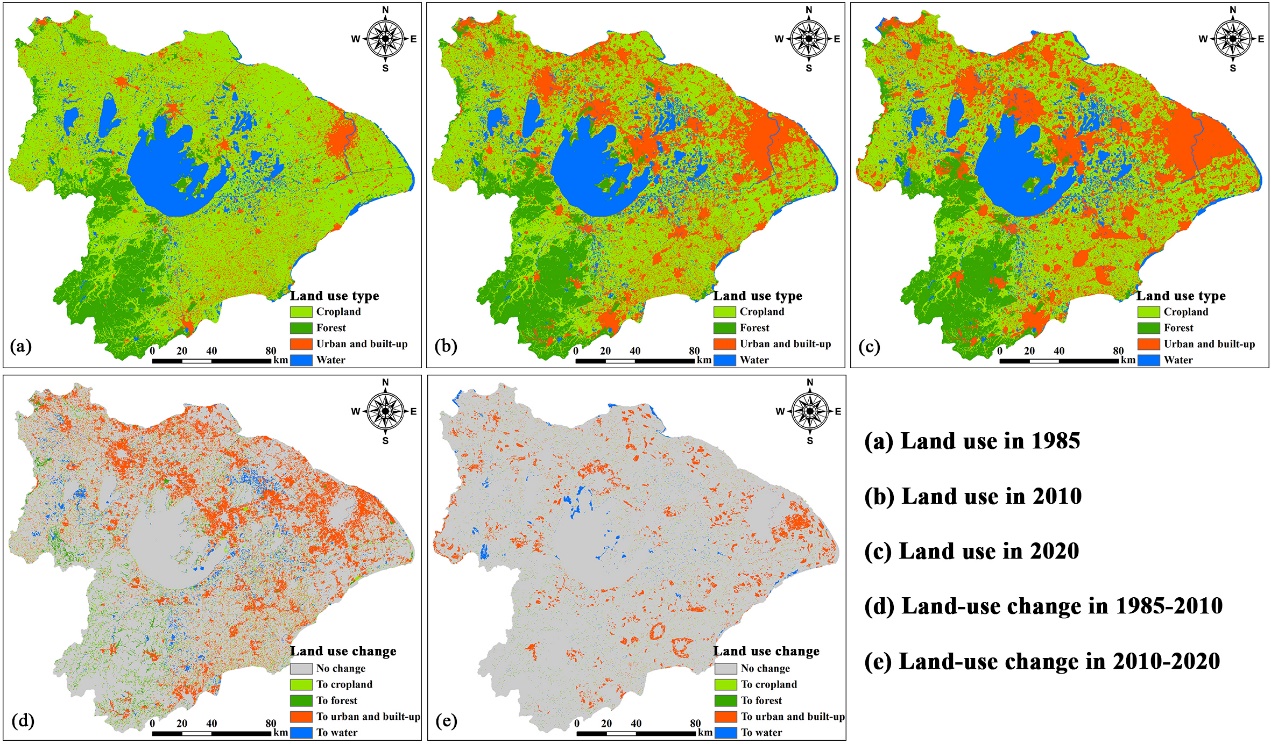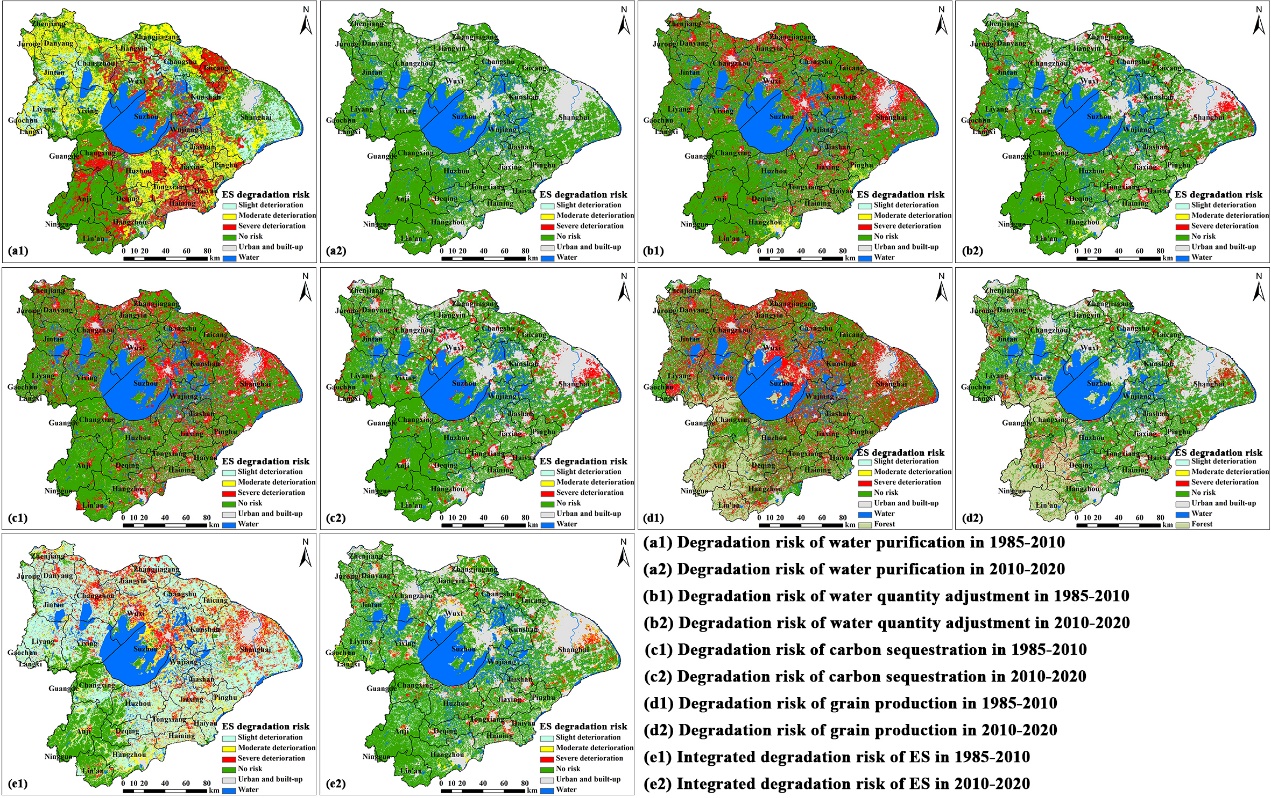Ecosystem services (ES) are maintained for human survival and development, and the degradation of ES will have an important impact on humans, a direct threat to regional and global sustainable development and ecological security.
The Taihu Lake Basin (TLB), a core part of China's Yangtze River Delta, has experienced remarkable economic development (at an annual GDP growth rate of 15.7%), population growth (at an annual growth rate of 3.0%), and urbanization (at an annual growth rate of 9.2%) over the 1985–2010 period. Rapid industrialization and urbanization have dramatically changed land use/land cover patterns in the basin. This has, in turn, caused extensive degradation of ES, including water purification, carbon sequestration, water quantity adjustment and grain production (GP). There is a pressing need to assess the degradation risk of ES induced by land-use change in order to facilitate science-based policy-making for a sustainable development in the region.
By developing an interdisciplinary methodology based on the Procedure for Ecological Tiered Assessment of Risk (PETAR), associate professor Xu Xibao from Nanjing Institute of Geography and Limnology, Chinese Academy of Sciences (NIGLAS) selected four key ES related to water purification, water quantity adjustment, carbon sequestration and grain production. The study employs models of Denitrification-Decomposition (DNDC), Soil-Water-Atmosphere-Plant (SWAP), Biome-BGC and Agro-ecological Zoning (AEZ) for assimilations. Land-use changes by 2020 were projected using a geographically weighted multinomial logit-cellular automata (GWML-CA) model. This study establishes the Framework of the integrated degradation risk assessment of ES. (Fig.1) Land-use change in the Taihu Lake Basin, 1985–2020. (Fig.2) Degradation risk of ES in the TLB in 1985–2020. (Fig. 3.)
This study shows that slightly less than two-thirds (63.6%) of the region experienced integrated degradation risk in ES during the period of 1985–2010. Nearly 10.7% (or 3961.2 km2) of land experienced severe deterioration. Epicenters of land with ‘severe deterioration’ are located in Shanghai and Jiangsu province, mainly involving the cities of Suzhou, Changzhou, Wuxi, Jiangyin, Zhangjiagang, Changshu and Kunshan. about 12% of the basin will continue to experience degradation until 2020. ES exhibiting a greater risk of severe deterioration is concentrated not only in Shanghai (the largest mega-city in China), but also in a few large- and medium-scale cities as well as in some small cities (Yixing, Tongxiang, Danyang, Jitan and Changshu).
It's significant for policy makers to achieve a dynamic balance between growth in population and GDP and multi-dimensional ES. The mechanisms between ecological functions and ES, spatial and temporal interdependencies of ES, the trade-offs among specific key ES and between ES protection and socio-economic development in this basin need further study to capture the most dynamic processes of these forces in China, in an accurate and timely way.
This study was supported by the National Natural Science Foundation of China (41030745; 41371532), and Interdisciplinary Frontier Project of Nanjing Institute of Geography and Limnology, CAS (NIGLAS2012135019). This research is also partially supported by a NASA Land Use and Land Cover Change program project (NASA-NNX09AI26G) and the NSF Division of Information & Intelligent Systems (NSF-1028291). The study achievements were published in the Science of the Total Environment(IF = 4.099).
Xibao Xu*, Guishan Yang, Yan Tan, Qianlai Zhuang, Hengpeng Li, Rongrong Wan, Weizhong Su, Jian Zhang. Ecological Risk Assessment of Ecosystem Services in the Taihu Lake Basin of China from 1985 to 2020. Science of the Total Environment, 2016, 554-555:7-16.
Article link: http://www.sciencedirect.com/science/article/pii/S0048969716303308.

Fig.1 Framework of the integrated degradation risk assessment of ES

Fig.2 Land-use change in the Taihu Lake Basin, 1985–2020

Fig. 3. Degradation risk of ES in the TLB in 1985–2020
(Information source: Nanjing branch of CAS)

